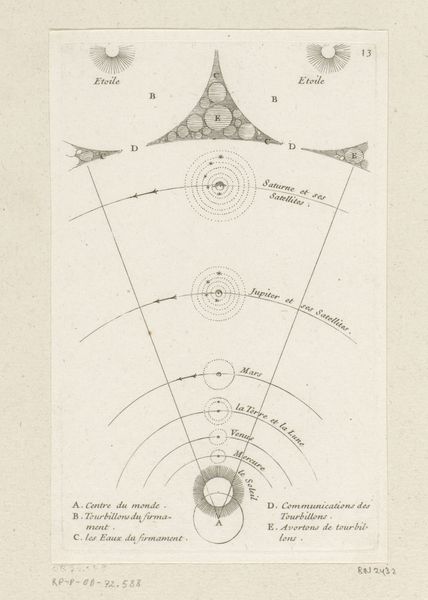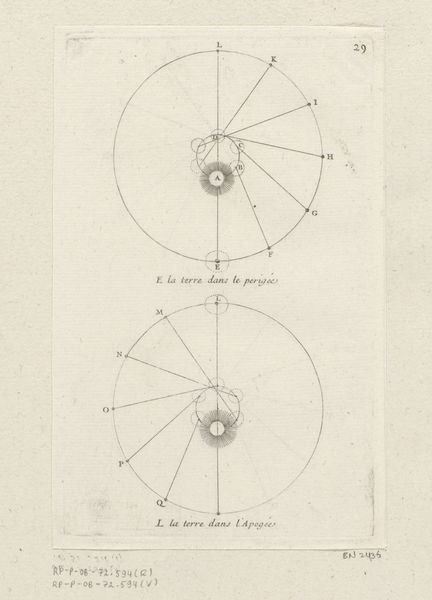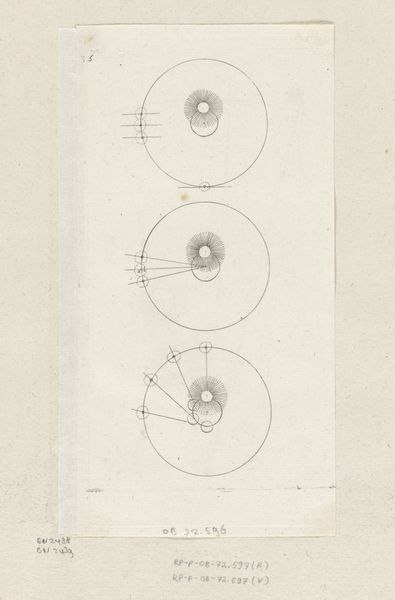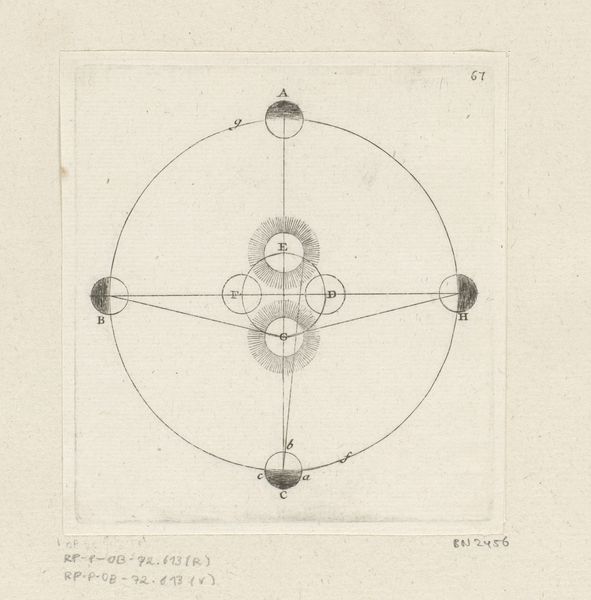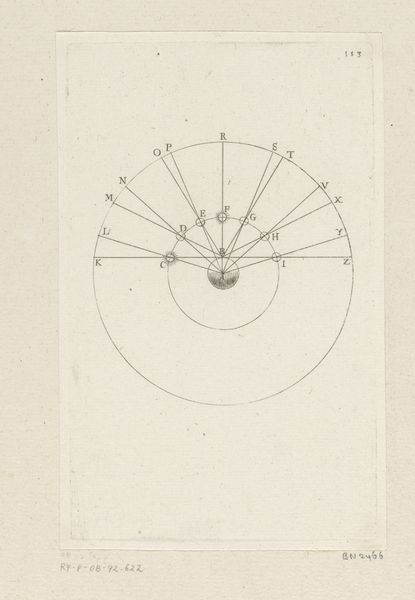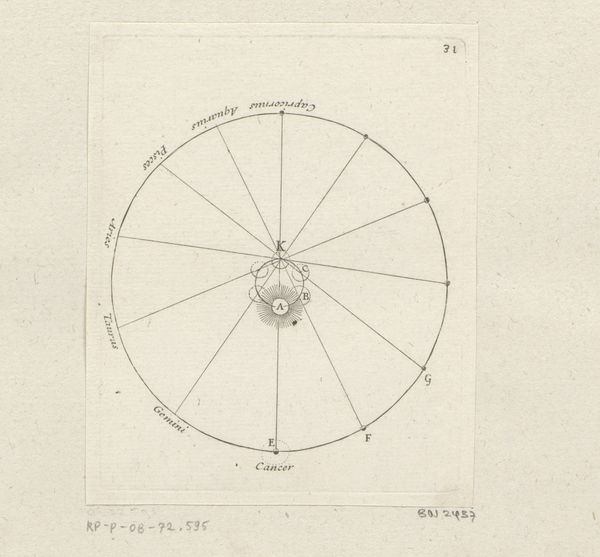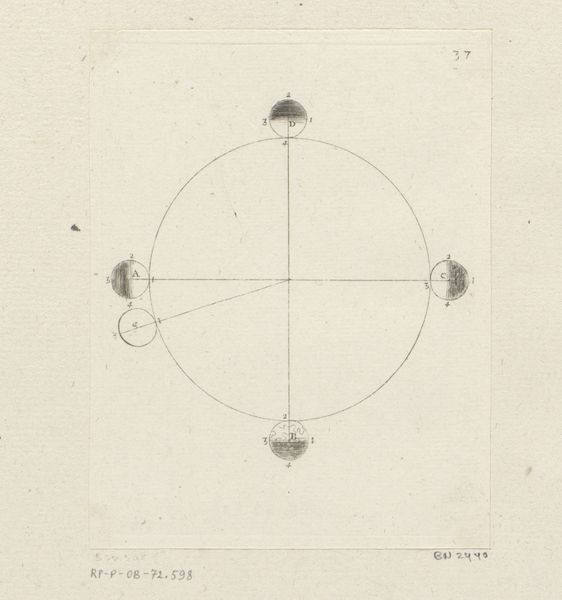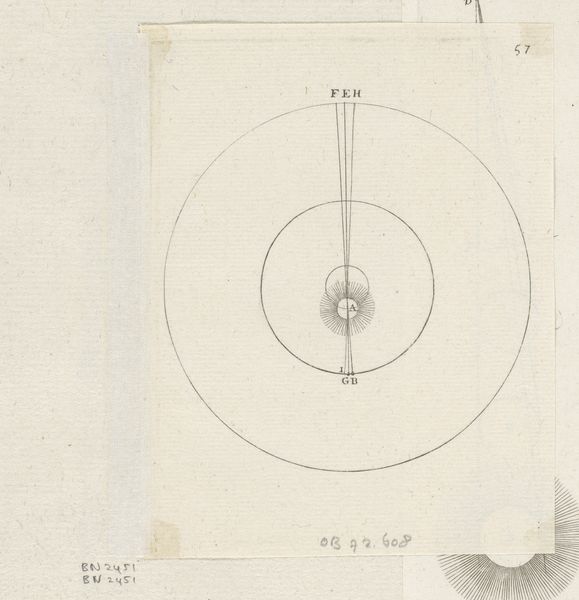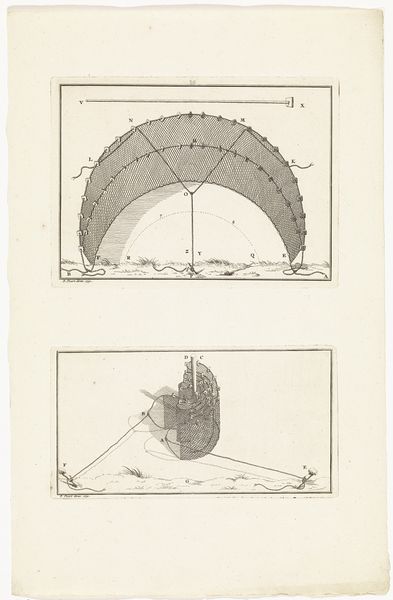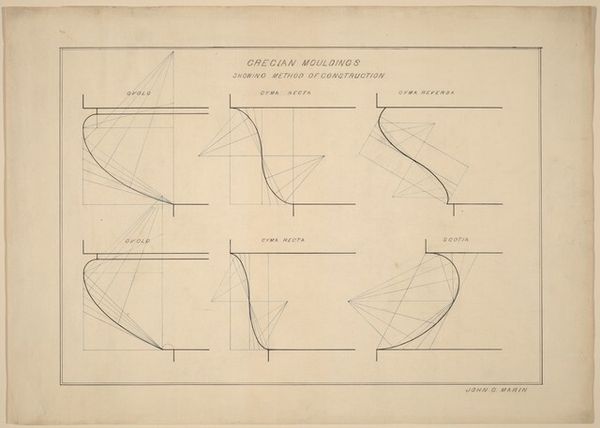
drawing, print, graphite, engraving
#
drawing
#
16_19th-century
# print
#
old engraving style
#
geometric
#
line
#
graphite
#
sketchbook drawing
#
pencil work
#
history-painting
#
academic-art
#
engraving
#
realism
Dimensions: height 225 mm, width 134 mm
Copyright: Rijks Museum: Open Domain
This print by Abraham Vinkeles visualizes the eclipse of 1833. The detailed rendering reflects not just scientific interest, but also the societal drive in the Netherlands to understand and document natural phenomena. The image creates meaning through its careful depiction of the sun and moon's alignment. It's a visual code, marking the specific times of the eclipse's phases. Made in a period of increasing scientific exploration, it reflects a culture that valued empirical observation. Institutions like the university at Leiden, would have had a crucial interest in documenting the eclipse. It's a record of a celestial event and a statement about the times it was made in. Understanding this work involves delving into the scientific literature and public records of the time. This kind of research helps to contextualize the artwork, so we may appreciate the conditions under which art, even scientific illustration, is made and understood.
Comments
No comments
Be the first to comment and join the conversation on the ultimate creative platform.
